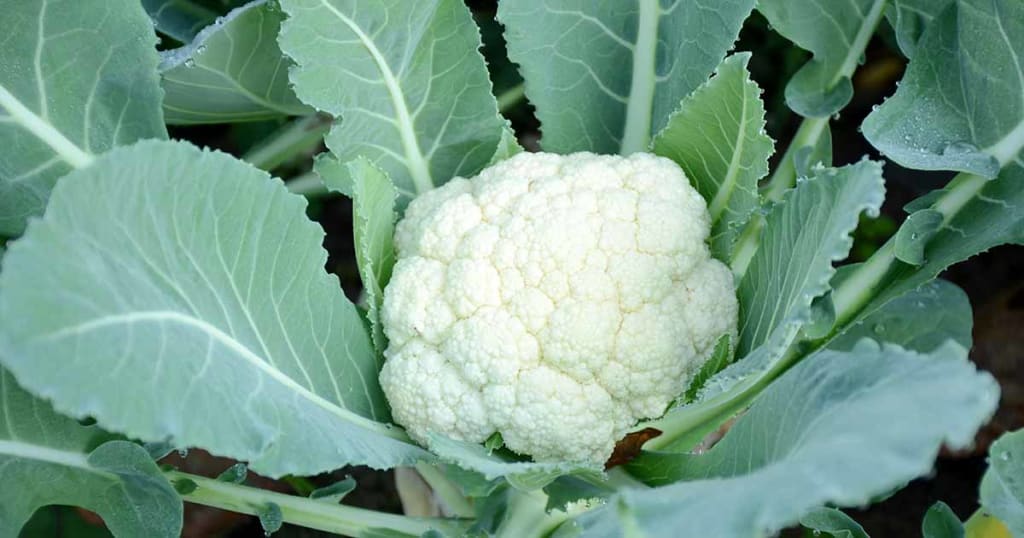Cauliflower Farming in India: An Informative Guide
Cauliflower Farming in India

Cauliflower is one of the most popular winter-season vegetables grown in India. It belongs to the Cruciferae family and is also known as Gobhi in India. Although this vegetable is cultivated in almost every state, the key producers are states like U.P., Bihar, Orissa, Assam, M.P., Gujarat, and Haryana. In addition, it is an important part of the human diet because it’s good in taste and has nutritional value.
Cauliflower is a high-protein vegetable that contains carbohydrates, vitamins B and C, and necessary minerals for human health. Its flowering head is edible and is mostly consumed as a vegetable in curries, soups, and pickles. If you are a farmer and want to grow Cauliflower as your next crop, this blog is for you. Here, you will get all the information related to the farming of Cauliflower in India.
Climate Requirements for Cauliflower Farming
Cauliflower is a winter-season vegetable. It requires cool and slightly moist climate conditions for a better crop yield. The average monthly temperature ranges from 15 to 20 °C, which is best for Cauliflower cultivation. However, the early varieties of Cauliflower require higher temperatures and longer days. For your information, there are two seasonal types of Cauliflower cultivated in India: Early-season and Late-season crops.
Soil Preparation
Cauliflower can be grown in any soil type, from clay to loam. However, deep, loamy soil is considered most appropriate for farming. Also, farmers prefer soils with high moisture-holding capacity in the late season/summer. This is because water deficiency affects curd development.
Moreover, soils that dry rapidly are highly preferred in the rainy season. This helps in conducting several cultural and harvesting operations easily. The cauliflower crop is also sensitive to high acidity. Therefore, the optimum pH of the soil should be 5.5 to 6 for maximum production. Farmers can use a John Deere 5065e tractor to prepare land for cauliflower cultivation.
Sowing Time
The right time for sowing Cauliflower seeds depends on factors such as the climate, varieties, and temperature for a bright and healthy curd formation. Moreover, there are three different varieties of Cauliflower: early season, main season, and late season. The early-season varieties are sown from May to August, and they become ready for harvest from September to December.
Meanwhile, the perfect sown duration for main season varieties is from September to October. These varieties of Cauliflower are ready for harvest from December to January. Last but not least, late-season varieties are sown from October to December and harvested from mid-January to April end.
Seed Rate
For cultivating Cauliflower from early-season varieties, 600g-750gm/ha seed will be required. On the other hand, mi and late-season varieties require 400-500 gm/ha seed.
Nursery Preparation for Cauliflower Cultivation
Prepare nursery beds that are one meter wide and fifteen cm in height. To prevent fungal diseases, fungicides such as Captan or Thiram should be used at a rate of 2 g/l of water. Move ahead with seed sowing in lines, but the spacing should be 8-10 cm between rows and 1.5-2 cm between seeds.
Also, the seeds should be sown at a depth of 1.5-2cm. Don’t forget to cover the seed with sand and FYM mixture. During monsoon season, you can prepare a nursery under a polyhouse or polytunnel. In addition, you can conduct weeding and intercultural operations in a timely manner to keep the crop healthy.
Transplanting
After 4-5 weeks, seedlings become ready for transplanting. During transplanting, the distance between two plants should be 45 cm X 45 cm for the early season. For the main-season and late-season varieties, this planting distance needs to be 60 cm X 60 cm. There’s a high demand for small and medium-sized Cauliflowers in the market. Expert farmers fulfil such consumer demands by reducing planting distance.
Manure and Fertilizers
The requirement of manure and fertilizers for cauliflower cultivation depends on the soil fertility. Therefore, you should conduct soil testing before cauliflower farming to determine the fertility of the soil. Moreover, to improve the fertility of the soil, you should add 150-200 q/ha and mix it thoroughly in the field.
Also, the cauliflower crop should be treated with 200 kg of Nitrogen, 75 kg of phosphorus, and 75 kg of potassium per hectare for a better yield. 100 kg Nitrogen, 75 kg phosphorus and 75 kg potash should be given to the soil while transplanting. The remaining half of the Nitrogen should be applied 30 to 45 days after transplanting.
Harvesting of Cauliflower
The cauliflower crop gets ready for harvesting 90-120 days after transplanting. Farmers should harvest fully white-coloured mature Cauliflower for sale immediately. If they delay harvesting, the curd’s colour will turn yellowish, and its thickness and charm will also start reducing. Therefore, it is necessary to cut the Cauliflower at the right time.
Yield of Cauliflower
The yield of cauliflower farming depends on the production season and chosen varieties. The early-season varieties will produce around 6-10 t/ha, while mid-season varieties provide farmers with a yield of 12-20 t/ha. On the other hand, they benefit from a 20-30 t/ha yield of Cauliflower from late-season varieties.
Conclusion
This is all about cauliflower farming in India. Following this guide will be a great help for you if you are new to Cauliflower farming. Also, it will navigate you through different steps of cauliflower farming for a better overall yield and good income. To grow a white-coloured, charming Cauliflower, you can use machinery and farming equipment. However, the John Deere 5050d Price, implements' borrowing cost, and their maintenance should also be considered before including these machineries in your cauliflower farming.
About the Creator
The Sustainable Seedling
The Sustainable Seedling delves into the joyful world of planting, cultivating not just vibrant blossoms and bountiful harvests, but also a respect for our planet. Discover eco-friendly practices, tips for urban green spaces.






Comments
There are no comments for this story
Be the first to respond and start the conversation.